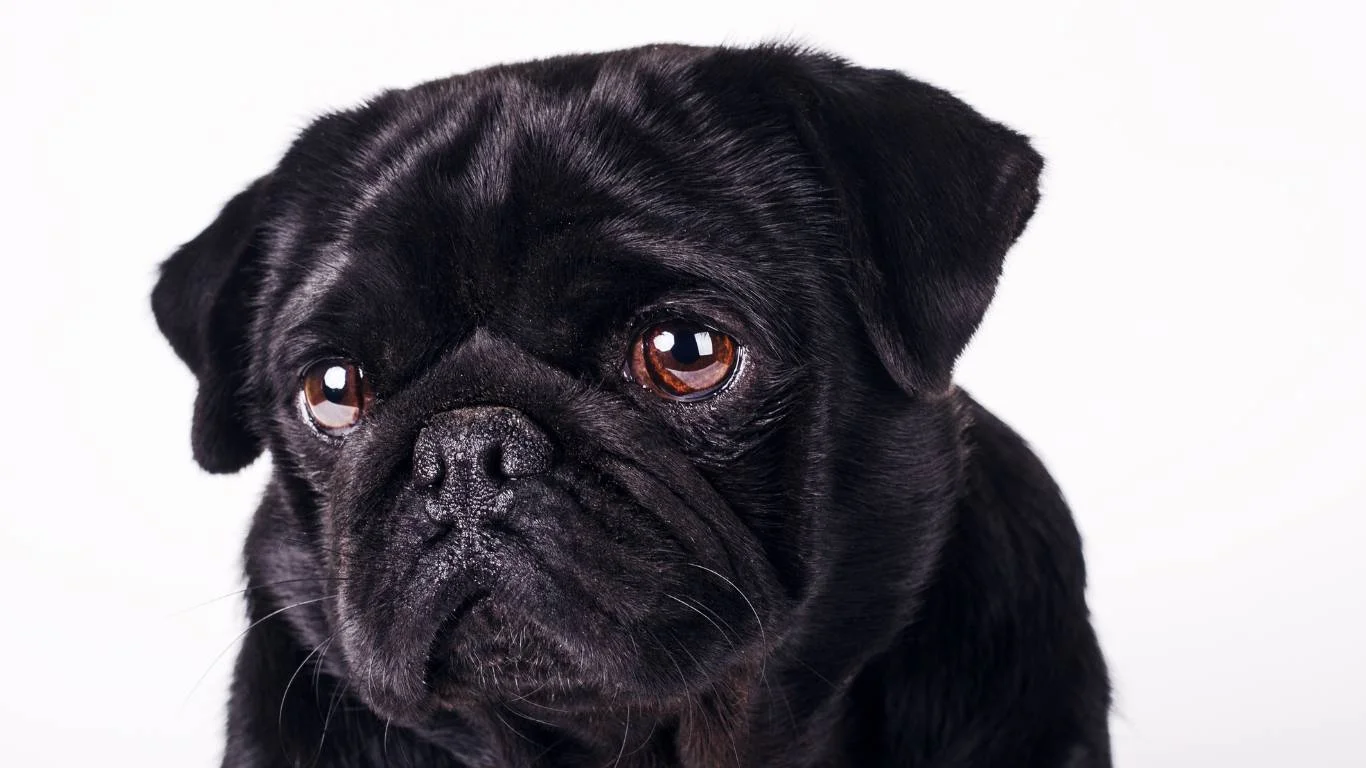How to Help a Dog with Chronic Ear Infections: Proven Fixes That Work
If you’re anything like me, you know how heartbreaking it is to see a dog constantly scratching at their ears, shaking their head, or just looking plain miserable. One of the most common reasons behind that is chronic ear infections. So, if you’ve been Googling how to help a dog with chronic ear infections, you’re not alone. I’ve been in the vet field for a while now, working closely with pups and their pet parents, and ear issues come up way more often than you might think—especially those recurring ones that never seem to fully go away. Let’s dive into what you can actually do to help your furry friend find some relief.
What Chronic Ear Infections Really Mean

First off, let’s break down what we’re dealing with. Chronic ear infections in dogs aren’t just your run-of-the-mill itchy ear. These infections tend to come back repeatedly—often every few weeks or months—and they can be incredibly frustrating to treat. As a Veterinary Assistant focused on nutrition and wellness, I’ve seen plenty of pups where the usual ear drops just didn’t cut it because we were missing the bigger picture.
Symptoms You Shouldn’t Ignore
Even if you’ve dealt with an ear infection before, chronic ones can show up differently. Some dogs have a subtle head tilt or just seem “off.” Here are a few signs I’ve seen time and time again in the clinic:
- Frequent head shaking or ear scratching
- Foul-smelling or dark ear discharge
- Red, inflamed ear canals
- Thickened skin inside the ears
- Crusting or scabbing around the ears
- Loss of balance in some severe cases
It’s always wild to me how some pet parents think it’s just “normal” behavior—especially in floppy-eared breeds like Cocker Spaniels or Golden Retrievers. Trust me, it’s not. That smell you’re trying to ignore? That’s your dog telling you something is off.
Common Causes of Recurring Dog Ear Infections

Now, let’s talk root causes. This is where I get a little nerdy because finding the source is half the battle. I can’t count how many times a dog has come in for their “monthly ear cleaning” only to discover we’re just treating symptoms instead of figuring out the cause. Here’s what’s typically behind those stubborn infections:
- Allergies: Food or environmental allergies are huge culprits. And yes, food matters more than most people think—more on that later.
- Yeast Overgrowth: Dogs naturally have yeast on their skin, but when things get unbalanced, boom—itchy, smelly ears.
- Bacteria: Especially if the ears are moist (like after swimming), bacteria love to move in.
- Foreign Bodies: A tiny grass seed stuck in the canal can cause weeks of drama.
- Hormonal Imbalances: Conditions like hypothyroidism can make the body more infection-prone.
- Structural Issues: Some breeds just have ear canals that don’t ventilate well—looking at you, Bulldogs.
Sometimes it’s not just one thing. I’ve had patients where it was a mix of allergies and breed-specific anatomy causing a vicious cycle.
Why a One-Size-Fits-All Approach Doesn’t Work

Here’s a little tough love from someone who’s seen it all—just grabbing some over-the-counter ear drops isn’t going to fix this. Chronic ear infections are almost always a symptom of something deeper. If we don’t address the “why,” we’re basically just putting a Band-Aid on a broken faucet. I’ve worked with vets who swear by topical meds, and yeah, they have their place. But if we’re not tackling internal triggers—like inflammation from diet—we’re going to be back in the exam room next month.
Nutrition: The Hidden Key (That Most Pet Parents Overlook)
I’ve had so many “aha!” moments with clients when we cleaned up their dog’s diet. Sometimes, simply switching off kibble loaded with fillers and onto a clean, limited-ingredient or fresh food diet made a world of difference. I remember one little Frenchie, Milo, who was in every month for smelly ears. After an allergy panel and some dietary tweaks? Clear ears for over a year now. No meds needed. Wild, right?
Pro tip from the vet assistant trenches: If you’re noticing frequent infections, keep a food diary. Track what your dog eats, and you might notice flare-ups happen after certain treats or meals. It’s way more helpful than you’d think.
When to See the Vet (And What to Expect)
Honestly, I’m all for holistic and natural options, but there comes a point where professional help is a must. If your dog’s ear is warm to the touch, they’re in obvious pain, or there’s thick pus-like discharge, it’s time to call your vet. Expect a thorough ear exam, maybe some swabs, and possibly even a culture to identify exactly what’s growing in there. The treatment plan could involve:
- Prescription ear drops or oral antibiotics/antifungals
- Ear cleaning under sedation if things are really blocked
- Further diagnostics like allergy testing or hormone panels
And don’t skip recheck appointments—so many infections come back simply because the meds were stopped too soon. I’ve literally had clients thank me for that little reminder because it saved them another vet bill.
At-Home Maintenance: Keeping Those Ears Clean (But Not Too Clean)

Alright, let’s talk home care—because even if your vet clears up the current infection, prevention is where the real magic happens. And yep, I’ve seen what happens when things are overdone too. There’s this fine line between helping and overdoing, and I’ve watched well-meaning pet parents accidentally make things worse by cleaning too aggressively or too often.
How to Clean Your Dog’s Ears Without Causing More Problems
Here’s what I usually recommend to clients at the clinic, and it’s pretty much what I do with my own dog:
- Use a vet-approved ear cleaner. Skip the hydrogen peroxide or homemade mixes unless your vet specifically says it’s okay.
- Warm it up slightly (like body temp) so it’s not a shock to your pup’s ear.
- Squeeze the solution into the ear canal, gently massage the base of the ear for about 30 seconds—you’ll hear that squishy sound. That’s normal!
- Let your dog shake it out (stand back!) and then gently wipe away the gunk with a cotton ball or soft cloth. Never use Q-tips—those can do serious damage.
I had one client’s Lab, Max, who used to get super antsy at ear cleaning time. We started pairing it with peanut butter lick mats, and suddenly he was cool as a cucumber during cleanings. Honestly, small tricks like that make a big difference.
Exploring Long-Term Solutions: Diet, Supplements & Environment

So now that the basics are covered, let’s zoom out a bit. If your dog keeps battling ear infections, it’s time to rethink their entire routine—not just what goes in their ears, but what goes in their bowl too. This is where my nutrition background really kicks in, and I’ve seen huge improvements just by changing a few core things.
Anti-Inflammatory Diets: Your Dog’s Gut and Ears Are More Connected Than You Think
You wouldn’t believe how many dogs I’ve seen who started getting fewer infections just by eliminating high-carb, high-filler foods. Think wheat, soy, corn, and by-products—basically the usual suspects in cheap kibble. Switching to something more species-appropriate (raw, fresh-cooked, or freeze-dried options) helps reduce systemic inflammation that often fuels chronic conditions like ear issues.
I worked with a sweet pittie named Daisy who’d had gunky ears for nearly two years straight. We switched her to a fish-based limited-ingredient diet, added some omega-3-rich fish oil, and in a couple months? Her ears were the clearest they’d ever been. It wasn’t magic—it was just nutrition doing what it does best.
Supplements Worth Talking About
I’m not big on throwing a bunch of pills into a bowl, but there are a few additions I often recommend for pups with recurring infections:
- Omega-3s: Natural anti-inflammatory, supports skin and immune health.
- Probiotics: Balances gut bacteria, which in turn can help reduce yeast overgrowth systemically.
- Quercetin: Nature’s Benadryl—great for allergy dogs (but always ask your vet first).
Just remember—supplements can be helpful, but they’re not a replacement for the right diet and lifestyle. I always walk my clients through what their dog really needs before recommending anything.
Managing the Environment: Often Overlooked, but Super Important

Here’s a truth bomb: sometimes, it’s not what your dog eats—it’s what they’re exposed to every day. Allergens in your home (like dust mites or mold), dirty bedding, or even their favorite pond can all be contributors. I once had a client whose dog flared up every time they went hiking near a specific trail. Turns out, the area was loaded with pollen that triggered a cascade of ear issues.
Simple Steps That Actually Make a Difference
If your pup is sensitive, try the following:
- Wash bedding weekly in hot water (unscented detergent is best)
- Use an air purifier in their sleeping area
- Wipe their paws and under-ears with a damp cloth after walks
- Limit swimming in lakes or dirty water during flare-up seasons
It may sound like overkill, but these micro-habits add up. And more importantly, they can reduce the need for meds over time. I always remind my clients: consistency beats intensity. You don’t need a crazy complicated routine—just one that you’ll actually stick with.
Could It Be Something More Serious?
Okay, real talk—sometimes chronic ear infections aren’t just “chronic.” They’re complicated. If you’ve done all the right things—diet, vet visits, ear cleanings—and nothing’s changing, you could be looking at something more involved like:
- Ear polyps or tumors: Not super common, but I’ve seen a few cases where we had to refer out to a specialist.
- Autoimmune disease: Especially if infections are paired with other systemic issues (weight loss, skin sores, etc.).
- Resistant bacteria or fungi: Sometimes the usual meds just won’t cut it anymore, especially if the infection’s been hanging around too long.
In those cases, it’s 100% okay (and wise!) to ask for a referral to a veterinary dermatologist. I’ve seen dogs bounce back after months—sometimes years—of struggling, simply because they finally got the right diagnosis. Don’t be afraid to push for answers if things aren’t improving.
Stay tuned, because we’re diving even deeper into advanced treatment options and alternative therapies next.
Alternative Therapies That Deserve a Second Look

If you’ve already tried the vet visits, changed the food, and cleaned the ears like a pro—but you’re still stuck in that cycle—there’s no shame in looking beyond traditional meds. In fact, I’ve seen some dogs do phenomenally well when we brought in alternative therapies alongside conventional care. We’re not talking mystical woo-woo stuff—these are legit, science-backed options that more and more vets are warming up to.
Acupuncture and Laser Therapy
I know, I know—it sounds like something you’d do at a spa, not a vet clinic. But hear me out. Acupuncture and cold laser therapy have been surprisingly effective for dogs with chronic inflammation, including stubborn ear infections that just won’t quit. One of our senior patients, a sweet old Beagle named Ruby, had monthly ear flare-ups and arthritis. Laser therapy sessions gave her visible relief—and less inflammation in the ears was a happy bonus.
There’s solid evidence behind these modalities now, and clinics across the country are starting to offer them. Check with your local holistic vet or integrative clinic to see what’s available.
Herbal Support and Natural Remedies
I always recommend caution here—“natural” doesn’t mean “safe for all dogs.” But under a vet’s guidance, certain herbs like calendula, witch hazel, and mullein have been used topically to support ear health. Some holistic practitioners also use Chinese herbs internally to address underlying imbalances. Again, don’t DIY this without consulting someone qualified.
Behavior and Emotional Triggers (Yes, Really)

This might sound a little out there, but bear with me—I’ve seen enough dogs to know when something deeper is going on. Chronic stress and anxiety can absolutely mess with a dog’s immune system. A constantly stressed-out pup is more likely to have flare-ups of all kinds, ears included.
I had a client whose Border Collie only got ear infections when her owner left town. Every. Single. Time. We finally figured out that the change in environment and routine was enough to kick off a chain reaction—stress, immune suppression, and boom, an ear flare.
How to Create a Low-Stress Routine
- Stick to a consistent daily schedule (meals, walks, bedtime)
- Use calming aids like Adaptil diffusers or calming music
- Consider behavioral training or anxiety support supplements if needed
Reducing stress might not be the silver bullet, but it can be the missing piece of the puzzle. Your dog’s emotional health is tightly tied to their physical wellness—something I remind clients of all the time.
Building a Long-Term Plan with Your Vet
If there’s one golden takeaway from everything I’ve learned as a vet assistant with a focus on nutrition, it’s this: chronic ear infections require a layered, long-term plan. It’s never just about the ear drops. It’s the food, the environment, the stress levels, the genetics, and sometimes, yeah—it’s just plain bad luck too.
Here’s what I suggest every pet parent do when dealing with long-term ear problems:
- Find a vet (or a vet team) who listens and is open to a multifaceted approach.
- Keep a health journal—track flare-ups, diet, activities, even weather changes.
- Stay consistent. No matter the approach, most fail because folks give up too soon.
And don’t be afraid to get a second opinion. I’ve worked in multiple clinics, and sometimes a fresh pair of eyes makes all the difference. One of my favorite cases involved a Boxer named Tank—his regular vet missed a thyroid issue that a new clinic picked up on. Once that was treated, his ears finally cleared up after two years of constant infections.
Final Thoughts: You’re Not Alone in This
Dealing with chronic ear infections in your dog is exhausting—I’ve seen pet parents cry in the exam room out of pure frustration and worry. So if you’re in that boat, please know you’re not alone, and there is a way forward. It might take some detective work, some trial and error, and a few frustrating moments, but your dog’s comfort and long-term health are absolutely worth it.
Trust your gut, work with your vet, and don’t be afraid to explore options. The combination of nutrition, environment, medical care, and yes, even a little patience, can change everything.
References
Disclaimer
This article is intended for educational and informational purposes only and is based on my personal experiences as a veterinary assistant with a focus on canine nutrition. It does not replace professional veterinary advice, diagnosis, or treatment. Always consult your veterinarian or a qualified animal healthcare provider before making changes to your dog’s care plan.



